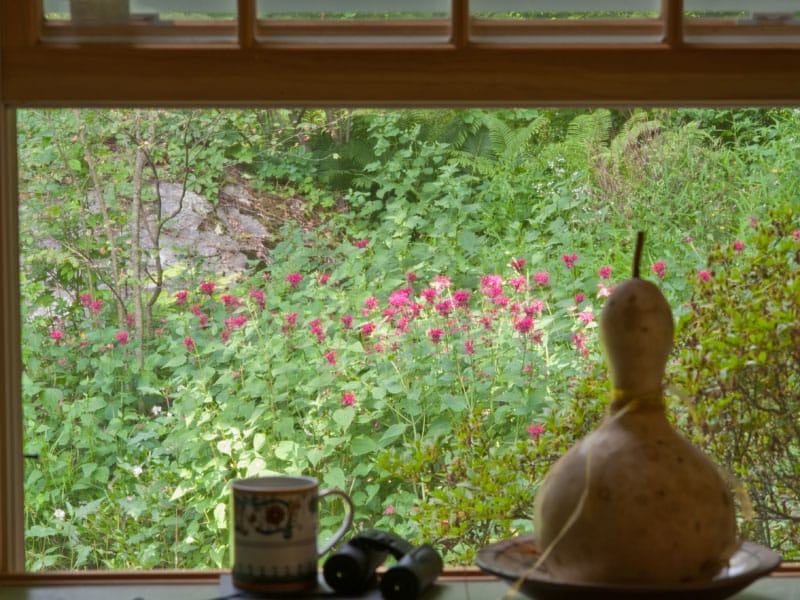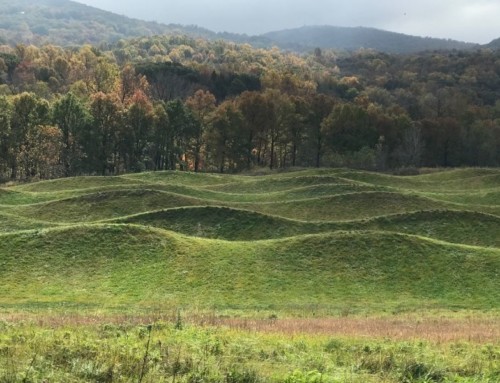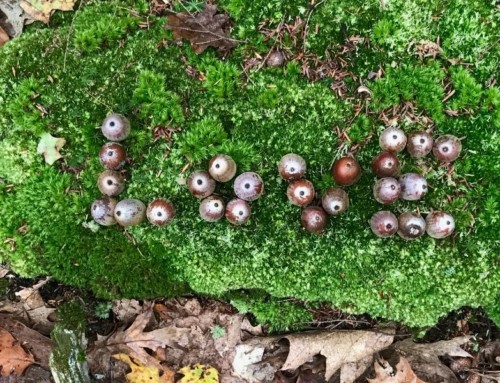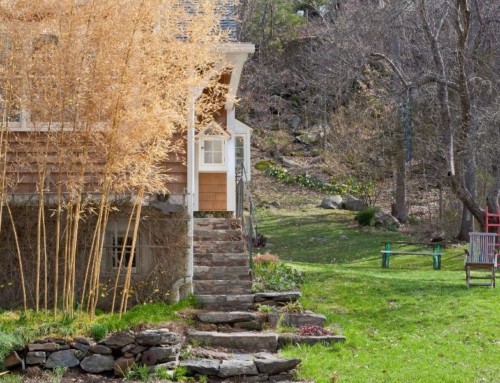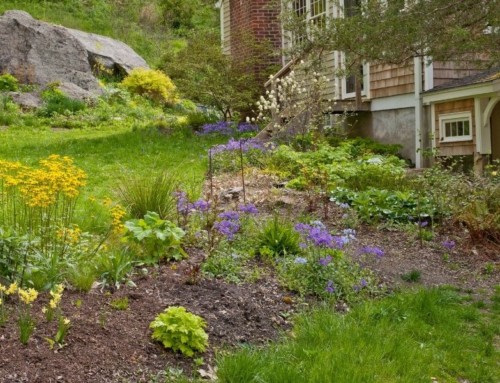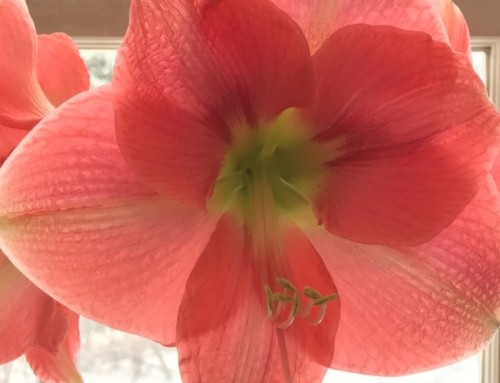Maybe my conviction that what we plant and how we care for our yards can have a positive environmental impact started with intuition and wishful thinking.
But curiosity about how things really work in nature led me to world of environmental scientists who deal in facts, not just feelings. The more I learn from them, the more I know that what we do at home makes a difference (positive or negative) and that every yard counts.
Entomologist Doug Tallamy has given substance and urgency to the importance of restoring insects to our landscapes. His book Bringing Nature Home describes the unbreakable links between native plants and wildlife.
Never one to pass up a chance to hear Dr. Tallamy speak, I was in the audience scribbling notes like mad at the June Connecticut Horticultural Society meeting. He spoke eloquently on “Restoring the Little Things That Run the World” (i.e. insects).
NOTES ON DR TALLAMY’S TALK, “RESTORING THE LITTLE THINGS THAT RUN THE WORLD”
- Life as we know it depends on insects. Without insects, most flowering plants would disappear, along with the food webs they support, leading to the extinction of reptiles, amphibians, birds and mammals (like us).
- Insects are the currency of our ecological bank accounts. Industrial agriculture, road hazards, unnecessary night lights, pesticides, habitat elimination, sterile lawns and “pest free” alien plants that fail to support diverse food webs and pollinators have caused a 45% decline in insect populations in the past 45 years.
- Migration is risky business, but birds must go where the food is. Temperate zones erupt in a giant flush of leaves each spring – and surge in production of insects that eat those leaves.
- Neotropical birds evolved to nest here because this giant pulse of nutritious insects enables reproductive success that outweighs the energy cost of migration. That no longer holds for many species.
- 96% of our songbirds need insects, mostly caterpillars. 90% of our insects are host plant specialists unable to eat non-native plants.
- Birds eat 500 million tons of insects each year. It takes 6000-9000 caterpillars to raise one clutch of chickadees.
- Spiders, frogs, toads and other amphibians, bats, rodents, possums and raccoons eat insects, which have more protein than beef. Red fox – 25% of their diet is insects, black bears – 23%.
- And on up into the food web where hawks, owls and snakes eat the critters that eat insects, and insect-pollinated plants feed us all.
RESTORING INSECTS TO OUR LANDSCAPES
Dr. Tallamy asserts that there’s good news – insect declines are not inevitable. “We can and must restore insects to our landscapes.”
With more than 85% of the U.S. east of the Mississippi River privately owned, he says, “landowners must now take a leading role in the future of conservation… Our parks and preserves are vital, but … they are not large enough and are too isolated from each other to sustain for much longer the plants and animals that run our ecosystems.”
“We can no longer leave conservation to the conservationists; there simply are not enough of them. We must accept that along with land ownership comes the responsibility of stewarding the life associated with the land.” Amen.
He urges us to focus on insects that maintain plant diversity and those that contribute the most to fueling food webs. His seven suggestions for taking care insects and other life on our properties:
- Reduce lawn area by half; restrict lawn to areas where you regularly walk
- Remove invasive plants
- Plant more of the native plants that support the most insect species.
- Minimize insecticide use
- Oppose mosquito fogging – pyrethroids kill nearly all the insects they contact. Mosquito dunks (Bacillus thurengiensis) kill only mosquito larvae.
- Build pollinator gardens, with specialist pollinators in mind.
- Put motion sensors on security lights to protect night-flying insects.
